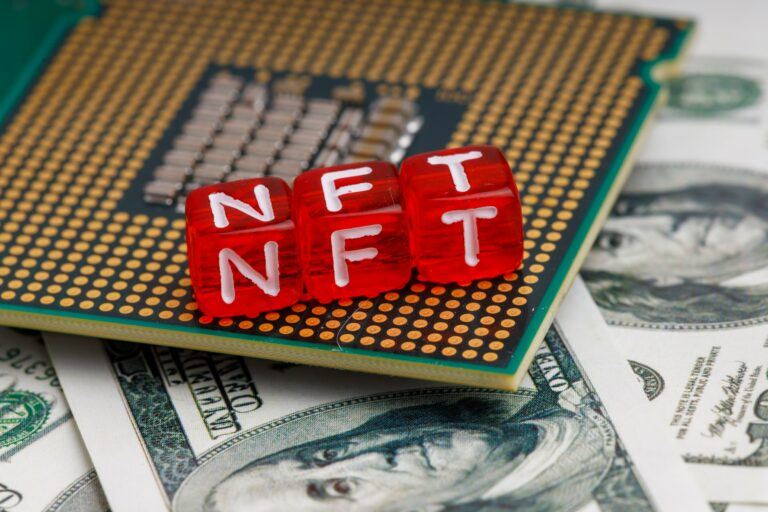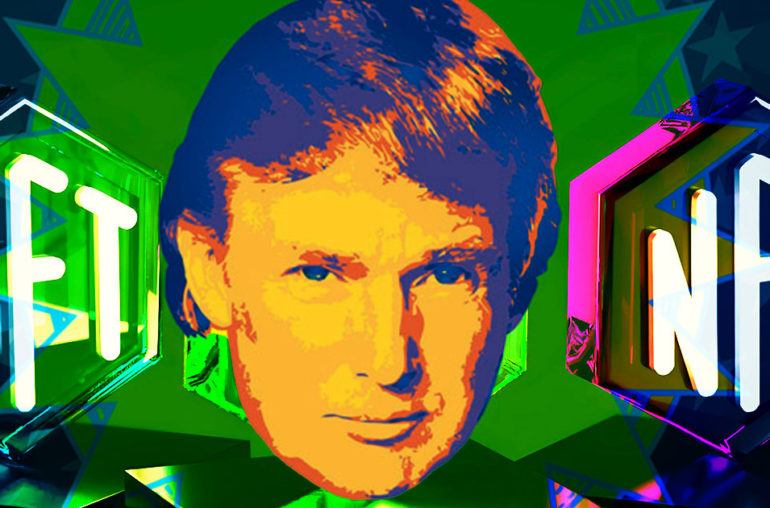A non-fungible token (NFT) refers to a digital asset created through tokenization, which turns a piece of sensitive data (think of your credit card information, for example) into cryptographic data —a string of numbers and letters linked to that original data. As their popularity exploded, so did the search for who invested NFTs.
The concept of tokenization goes back to the 70s, but in 2020 – 2021, it became famous thanks to blockchain technology and the rise of NFTs. Everything can be tokenized, from physical assets, such as real estate, and art, to digital files like images, videos, albums, etc.
When something is tokenized, it has unique metadata stored on the blockchain. The blockchain can track this metadata to prove its authenticity, so there can’t be two similar NFTs. These tokens represent ownership of unique items, therefore the name “non-fungible.”
But when did it all start?
Although it’s hard to talk about the exact date NFTs were invented, Meni Rosenfield, founder of Israel’s first BTC exchange, is considered the first to explore the idea of NFTs in 2012 with Colored Coins, considered the precursor of NFTs.
The idea behind Colored Coins was to use the Bitcoin blockchain to prove ownership by tracking the metadata of a real world asset. The problem was the limited capacity of Bitcoin’s blockchain. However, the idea of ownership, provenance, and tracking is what today’s intrinsic characteristics of NFTs are.
The first NFT ever minted goes back to early 2014. On May 3rd, Kevin McCoy minted Quantum on the Namecoin blockchain, one of the earliest cryptocurrency networks in the industry, launched in 2011. The NFT is a pixelated octagon that pulsates and changes colours. It was sold for just $4 and featured a video clip created by McCoy’s wife.
When NFTs began mainstreaming in early 2021, Quantum garnered massive value for NFT enthusiasts. It was sold in June 2021 for almost $1.5 million.
So happy to own the first ever NFT, Quantum, from @mccoyspace
A piece of history. Let's see how we can continue its story. pic.twitter.com/kCjke2CGkd
Quantum was the first NFT. But what about the first NFT collection? Well, the first collection was a blockchain-based virtual world game called Etheria World, launched three months after Ethereum.
Etheria is a metaverse game that consists of hexagonal tiles that function as lands of plots in which users can build properties. Each tile was an NFT that users could buy and sell for 1 ETH at the time (less than a dollar). Like Quantum, the game resurfaced in 2021 amid the NFT craze, with lands of plots reaching between $130k -$150k
Two years later, CryptoKitties was launched as one of the first blockchain-based card games built on the Ethereum network by Dapper Labs, a Canadian studio now considered an NFT powerhouse. These animated cats had different attributes that would make them potentially valuable. These collectible cats soared in popularity in December 2017, reaching an all-time high transaction volume and congesting the Ethereum network.
Throughout the years, blockchain gaming was just an underground niche known only by crypto enthusiasts. That industry went largely unnoticed until Axie Infinity turned the mainstream eye to blockchain and NFT games.
Axie Infinity was one of the most successful play-to-earn titles from the GameFi world. It combined gaming and finance through the use of blockchain technology. Users buy a set of three Axies, which are NFT creatures, to make their way through the game’s campaign and battle other players in the Arena to win AXS, the game’s native currency, which could be used to buy and sell NFTs or exchange for other cryptocurrencies. The game’s popularity netted over $1.5 billion in revenue for its development studio, Sky Mavis.
Negative sentiment dominated the crypto sphere in 2022. Nevertheless, blockchain gaming grew about 2000% from Q1 2021, and game DApps make up 52% of all blockchain activity. In fact, over $2.5 billion in 2022 has been invested into blockchain games, as per a report from DappRadar.
This increase clearly outlines investors and VCs’ interest in blockchain games and metaverse despite the poor performance of the current cryptocurrency market.
In 2022 the cryptocurrency market witnessed million-dollar NFTs reduced to merely a few hundred —even dozen – dollars, which is what happened to Logan Paul’s Bumblebee NFT.
Overpriced art pieces and limited pictures of Bored Apes are no longer the centre of attention. Instead, institutions, artists, and influencers are exploring NFTs as a potential solution for specific pain points in certain industries, supporting artists and content creators through royalties, improving business operations, and even charity.
What benefits does blockchain technology offer to gamers? There are three main benefits.
It’s worth noting that different blockchain and Web3 games apply these features in different ways. Some may allow users to control their own in-game assets while having centralized governance, for example.
How do non-crypto gamers feel about NFTs? Ubisoft’s Tom Clancy’s Ghost Recon and GCS’s S.T.A.L.K.E.R. were some of the first gaming titles that dared to introduce NFTs for their players, but they didn’t respond quite well. The two companies received a massive dose of backlash as players felt it was just an attempt to squeeze more money out of players —
For instance, Nicolas Pouard told Finder “I think gamers don’t get what a digital secondary market can bring to them.” Therefore, it might take a while for traditional gamers to realise the benefits of NFTs. However, the problem might be centred not on the monetization of NFT or NFT-related games but the over-monetization of them, and most importantly, the lack of utility of those NFTs and appealing gameplay mechanics and narrative for players.
NFTs present multiple benefits to real estate companies and users who want to participate in this market but don’t have the required budget. As we know, the real estate industry has a high barrier to entry due to a bulk of expenses and slow processes. For example, certain pain points in this industry are an overwhelming amount of intermediaries (banks, lawyers, auditors, agents) that add up to expenses and slow processes due to paperwork and management delays.
With the boom of the metaverse, real estate companies have decided to buy virtual property in open-world games like Decentraland and the Sandbox. These properties are sold as plots of land in the form of NFTs, and they can be sold or rented to companies or individuals without so much paperwork and intermediaries thanks to a peer-to-peer transaction using smart contracts.
Outside of the virtual world, physical real estate NFTs do exist. Two examples are:
NFTs are an excellent way to run fundraisings, especially for charity. The main advantage of NFT auctions is that donors receive NFTs as rewards after donations. This allows donors to promote their NFTs as merchandise, tickets to events, a stake in the direction of the fundraising, etc.
For example, NFT artist Beeple sold his Ocean Front piece for $6 million. The artist donated the money to the Open Earth Foundation in an attempt to fight climate change.
When the Russian-Ukrainian war started, several crypto influencers and companies donated their NFTs to the government, which it sold to finance its military in the combat against Russian forces.
The famous Australia Zoo launched a fundraiser using NFTs through the Algorand blockchain. The proceeds were donated to animal hospitals all across Australia.
The potential use cases of NFTs and blockchain technology were largely overlooked by the mainstream audience during the 2020-2021 bull run, most likely due to overpriced NFTs and hyped-up projects of extravagant Apes. After that the frenzyness has cooled down, artists, influencers, executives, and entrepreneurs are exploring NFTs as a technological instrument across multiple industries.
The NFT market is expected to grow north of $211 billion by 2030. The main driver of this growth is digital art, but NFTs are now showing a new value to the market besides art; they are being used as tools to solve pain points in certain industries, support artists, fundraising, charity, and even supply chain.
Featured image via Unsplash.
To make sure you receive a FREE weekly newsletter that features highlights from our most popular stories, click here.
The views and opinions expressed by the author, or any people mentioned in this article, are for informational purposes only, and they do not constitute financial, investment, or other advice. Investing in or trading cryptoassets comes with a risk of financial loss.


